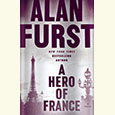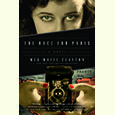Waking to Racism in 1958
In James Williamson’s coming-of-age novel, a city boy is shaken by small-town racism
James Williamson, a professor of architecture at the University of Memphis, draws on his youth for his second novel, The Ravine. The story provides an intimate look at small-town Mississippi life through the eyes of thirteen-year old Harry, the child of a prominent Memphis family who is staying with his aunt and uncle for the summer. It’s 1958, and virtually all white residents are committed to the status quo. The church, law enforcement, Jim Crow laws, and generations of custom have combined to enforce the separate and distinctly second-class status of the town’s black population.
 Harry’s aunt is one of the few who recognize the injustice, and she does her best to convert Harry to her liberal views. Harry’s uncle, a respected railroad engineer, is conflicted, still committed to the rules that maintain order though sympathetic to the black population. Harry himself is mostly motivated by his new interest in girls and the chance to drive his uncle’s car and shoot his uncle’s rifle. But he begins to understand racism when he gets a part-time job delivering groceries with Winston, the son of the black couple who work for his aunt and uncle. Eventually, of course, there’s a confrontation: Harry is present when a busload of black college students arrives and asks to worship at the town’s white church. The resulting scuffle leads to truly devastating results—for Winston and for Harry’s own family.
Harry’s aunt is one of the few who recognize the injustice, and she does her best to convert Harry to her liberal views. Harry’s uncle, a respected railroad engineer, is conflicted, still committed to the rules that maintain order though sympathetic to the black population. Harry himself is mostly motivated by his new interest in girls and the chance to drive his uncle’s car and shoot his uncle’s rifle. But he begins to understand racism when he gets a part-time job delivering groceries with Winston, the son of the black couple who work for his aunt and uncle. Eventually, of course, there’s a confrontation: Harry is present when a busload of black college students arrives and asks to worship at the town’s white church. The resulting scuffle leads to truly devastating results—for Winston and for Harry’s own family.
Williamson embellishes the basic story with lots of local scenes to flesh out the time and place, and Harry’s place in it. Harry witnesses shocking events, including a gang rape, and nearly drowns in quicksand, saved at the last minute by Winston. The local sheriff, who epitomizes violence and hate, repulses Harry. Yet even the sheriff has a tender relationship with a clumsily lobotomized local girl. The community is full of contradictions and nuances.
Harry puts up with a good deal of lecturing by his aunt, who is intent on explaining racial questions in terms appropriate to his naivete: “We may not have slavery anymore, but we are still feeling its effects a hundred years later. Harry, you told me Mr. Estes said Negroes are lazy and ignorant. And you’ve even heard Horace say that they are physically strong but show no initiative. Those are what we call ‘stereotypes,’” she says. “When you enslave people, you take away more than their freedom. You take away their self-respect, too, and along with it their initiative. They learn than no matter how hard they try, things won’t get any better; they’ll always be slaves. So eventually they just give up trying.”
The writing otherwise is quick and engaging. The main plot ends thirty years later as Harry returns to tend to his deceased aunt’s estate. There he finds some shocking family skeletons that tie everything together in ways he could not have imagined—a fitting end to this tale of the way institutional racism infected all life in the Deep South during the 1950s.


